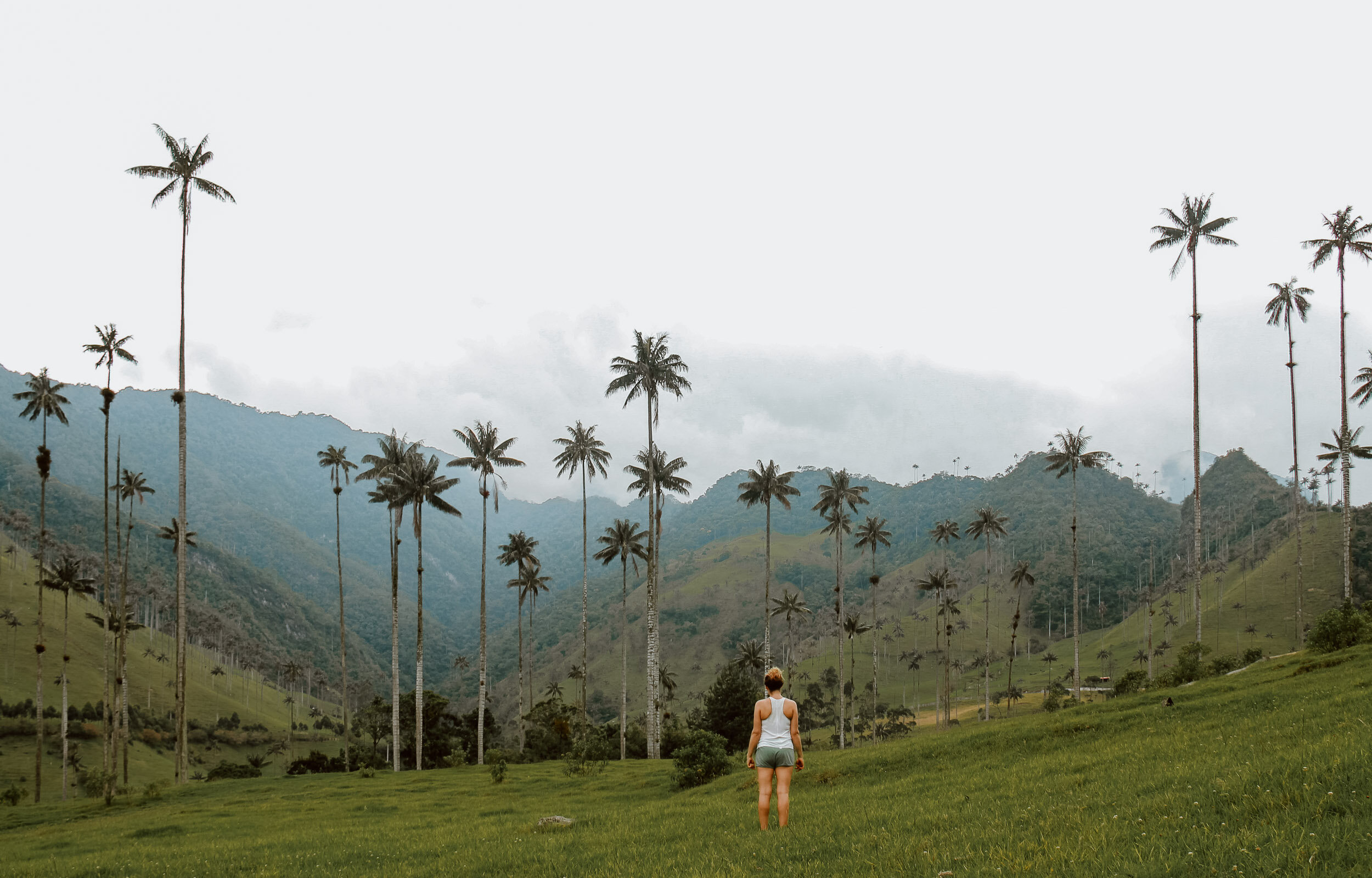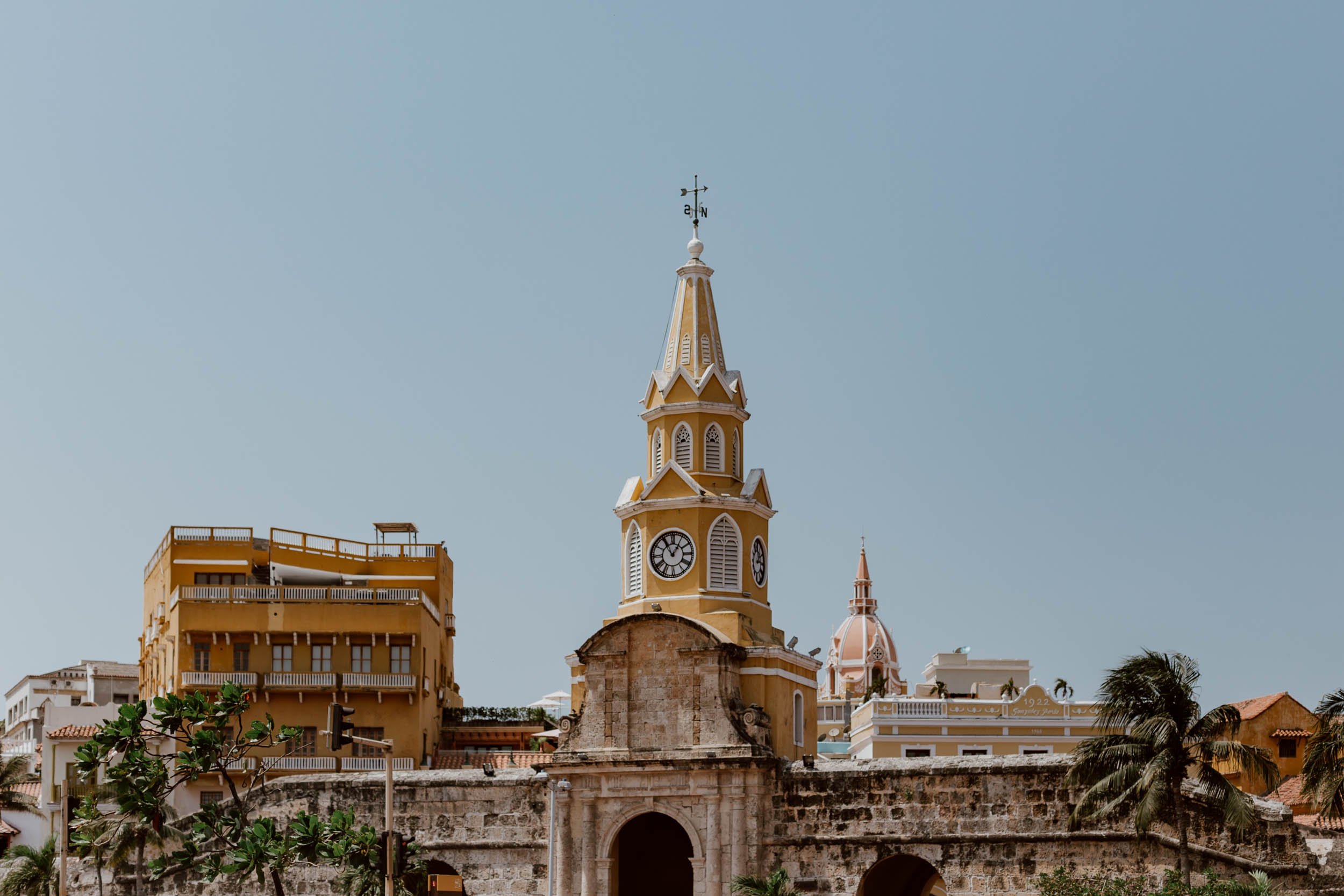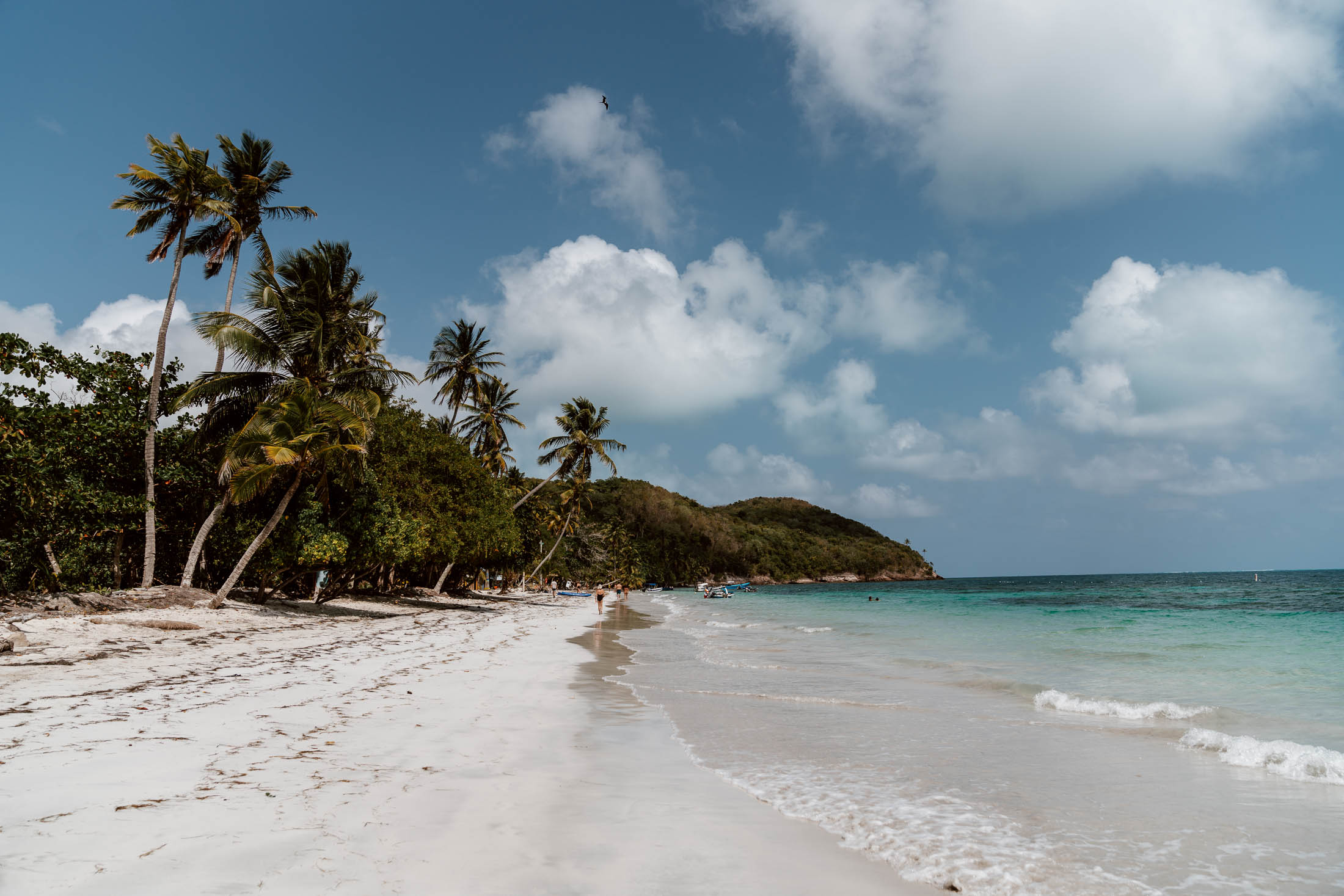The border crossing from Ecuador to Colombia (and vice-versa) is relatively simple if you do a little advance planning before you leave the capital of Ecuador.
We did the crossing together in January 2019, and wanted to share our experience plus advice on the route, costs, and things to avoid when travelling from Ecuador to Colombia by bus. The most common border crossing route is to take the bus from Quito to Tulcan, cross at Rumichaca - and then travel onwards from Ipiales to Pasto or Popayan in Colombia. This route can be done in a single day and involves at least four taxis and two buses, and takes 8-9 hours in total if your first night in Colombia will be spent in Pasto or 16-17 hours if you continue northward to Popayan.
However, many of you reading this may be hoping to first spend a few days in the famous market town of Otavalo before heading up to Colombia; if that’s the case then you’ll be running this exact same border crossing route and instructions, but simply have to catch the bus a few hours closer to the border. If Mindo is going to be your last stop in Ecuador, then we have also included transport instructions below.
Here’s our detailed guide on how to do the border crossing from Ecuador to Colombia by, via Tulcan - as with all our South America border crossing posts, please do let us know any updates, changes, or your own experience in the comments so we can keep the article relevant and useful for future travellers.
A Note on Flights
You may be thinking that for the next stage of your South America trip, it would make sense to just fly from Quito to Bogota (or even Cali)? Well, with the short distances involved and given that it’s a capital to capital flight route, you are right to at least consider this route to save yourself a day of overlanding.
Unfortunately though, due to a lack of providers and a ridiculous level of taxation at Quito airport, flying from Ecuador to Colombia isn’t a cost-effective option for backpackers. In fact the total cost per person of our border crossing route was £20 / $27 per person - whilst a direct flight from Quito - Bogota is at least £200/ $260, so if you’re on any sort of budget the bus is going to be the only option.
ROUTE: Quito to Pasto Border Crossing | Total Cost: £20 / $27 | Total Time : 8 hours
Step One | Bus From Quito to Tulcan
If your starting point is Quito, then we recommend that you begin your journey as early as possible from Terminal Terrestre de Carcelén - the north Quito bus station - which is a 30-45 minute taxi or Uber ride from the old town (Uber is the best option in Quito for a safe and secure journey at the right price, which is $8-12).
Once you arrive at the terminal, head to the taquillas (ticket booths) and purchase a ticket for the direct bus for Tulcan, for $8 per person. There are several companies providing this route, and you’ll quickly be inundated with offers from various men in the vicinity. Just remember to only purchase you ticket from the booth, and try and not to feel pressured into buying from the pushiest tout that approaches.
Some people may recommend taking a 1 a.m. bus to Tulcal, but as this particular bus station is one of the more dodgy we’ve experienced in South America, we would be very reluctant to recommend this unless completely unavoidable. Instead, as outlined above, your most sensible option is to arrive in time for one of the early morning buses.
Cost | $8 per person Time | 5 hours
ALTERNATIVE: BUS FROM OTAVALO TO TULCAN
If travelling from Otavalo to Colombia, then you will simply hop on the bus heading to Tulcan from the Pan-American highway. It’s actually the same buses which leave from Quito, so they pass by quite regularly (at least one every 30 minutes).
It is however necessary to take a 5-10 minute taxi ride from your hostel/hotel in Otavalo to the highway, where your driver will drop you off at one of two makeshift bus stops. Once at the side of the road, you will have to keep an eye out and flag the bus down so that it doesn’t just fly past you, and note that they are often quite full so you may not be able to get a seat straight away.
Another way to reach the border from Otavalo would be to take a bus from the central bus station (which is really just a dirt car park) to Ibarra and then change there for a bus to Tulcan, but we don’t think this is the best way.
Find out more information on things to do in Otavalo in our guide (published soon, we promise!)
Cost| $4 per person Time| 2-3 hours
ALTERNATIVE: BUS FROM MINDO TO TULCAN
Your best bet is to return by bus early in the morning to Quito’s Terminal Terrestre de Carcelén.
Step Two | Taxi from Tulcan to Rumichaca (The Border)
Once you’ve arrived in the nondescript bus parking area in Tulcan, you will find taxi drivers offering to run you to Rumichaca. If you’re on your own, it makes sense to join a group of other backpackers in order to split the $3.50 fare.
When we first did this crossing in the other direction way back in 2015, it was fairly common to hop into a colectivo van to transport you from Tulcan to the border. On our 2019 crossing however, these were nowhere to be seen and our taxi driver told us that they left from the plaza; as he’s a taxi driver he of course would tell us this but our advice is to just take the taxi anyway.
This is also a good chance to get rid of any remaining Ecuadorian dollars coins.
Cost | $3.50 Time | 10 minutes
Step Three | Exit Ecuador
Usually, this border crossing would be relatively simple. However, due to the awful on-going situation in Venezuela, this border is a key crossing point for the thousands of daily Venezuelans migrants looking to stay in Colombia.
In the first part of 2018 this would mean queues for several hours at least, but we were advised on the ground that numbers have reduced in the last six months. However, this doesn’t mean it is any less troubling or distressing to witness, or that the situation may not worsen later in 2019.
Of course, this minimal impact on your trip pales in significance in comparison to those who are actually trying to cross.
There is only one queue and one office for both entries and exits to / from Ecuador. You may be advised by some men that you’re not allowed to take your luggage in the queue but, for obvious reasons, ignore them and under no circumstances should you be separated from your bags before you reach the entrance to the Ecuador border office. People will often try to politely skip to the head of the queue but, given the situation, you are best not to kick up a fuss.
They only allow a groups of 10-20 people in at one time to the migration office.
After a wait of an hour or so, we reached the front of the line and were advised by the official border police (as everyone in front of us had been advised) that we really could not take our large backpacks in to the office with us. As there are two of us, we simply took it in turns to wait with our bags / get our stamps but, if you’re a solo traveller, we aren’t really sure what to advise. Perhaps pleading with the police is your best bet as we really would not recommend being separated from your bag at a South American border crossing at the best of times, let alone when there are so many desperate people crossing with you.
Inside the office, there is a priority queue for families and the elderly, and another line for everyone else. You’ll be called to a numbered booth to get your stamp.
As the situation is ever-changing at this border, it is essential that you factor in enough time for delays, and arrive as early as you can from Quito or Otavalo. To help future travellers, please do provide us with updates on your waiting time and the situation on the ground in comments section below.
Cost| 0 Time | 45 minutes
Step Four | Enter Colombia
Once you have your Ecuador exit stamp, cross over the yellow bridge for the 30-second walk to the Colombian side. Again, this has become a little more complicated due to the Venezuelan situation, and there were hundreds of people waiting around in Red Cross tents. However, it only took 10 minutes to get our stamps.
We discovered that there were three lines to enter the single Colombian border office - one for Colombians on the central right hand side, one for foreigners on the central left hand side, and another for Venezuelans. The official asked for nationality first before letting us enter the office, and then directed us to window number 7 inside the building (the other lines and windows inside the office are for those looking to exit Colombia).
The standard Colombia entry visa for UK travellers is free and valid for three months. As ever, make sure you check Colombian entry and visa requirements for your own nationality well in advance of crossing the border.
We were not asked for proof of departure or onward travel, or to show our yellow fever certificates - but this doesn’t mean you won’t.
There was a sign up in the Colombian office saying that they have a lunch break every day between 12-2 p.m. and to not cross at that time (a bit silly really), but we crossed at around 1 p.m. and everything seemed to be open and running normally.
Cost | 0 Time | 15 minutes
Step Five | Travel Onward to Ipiales
As you’ll likely have no Colombian Peso (COP) on you, you now have two options.
You can wait until you reach Ipiales Bus Terminal and take out money at the single cash machine there (it charges $13,200 (£3/$4) for withdrawals) or change money with one of several cambio guys here at the border. We opted to just change $40 USD to ensure we had enough money for the next bus and because these guys don’t offer a good rate (plus changing significant amounts of money at a border is something we never recommend). Our advice is to know the pure exchange rate in advance (we have the XE app on our phones) so you know roughly what to expect. Certain cambio guys at South American borders are quick-fingered on their calculators (and new notes are always quite confusing), so knowing your target local currency figure in advance gives you peace of mind. You’ll be doing well if you only lose 5-8% off this at the border. As ever, wait until they hand over money first and check it carefully to ensure they haven’t slipped you a 5,000 note instead of a 50,000 before you hand over your own cash.
You can then take a taxi or colectivo. The colectivos are easy to spot and all leave from the same car park in front of the Colombia border office, but you can also pay this in dollars. These are pretty small though so if you’re a couple or a group with a lot of big backpacks, a taxi is definitely a more convenient option. The usual taxi rate is $3.5 or $9,000 COP, but we got it for $3/$8,000 as the driver didn’t have change. Always agree the price before getting in the taxi for the 10-minute journey, and be aware that you may have to haggle.
Cost | $3 Time | 10 minutes
Note | A popular option once you arrive in Ipiales is to make a quick journey to the beautiful Las Lajas church. If you’re going to do this, then follow the above step and then find the Guardia de Equipaje at the Ipiales bus terminal (it’s at the far end of the main hall). Storage costs $2,000 COP but don’t leave any of your valuables here. You can then take a colectivo to Las Lajas for $2,000 COP or a taxi for $6,000 (one way) - you only need 45-60 minutes there and entrance is free.
Step Six | Take the Bus to…Somewhere in Colombia
This is where it gets a little complicated as, depending on what time your reach Ipiales (hopefully not later than 2 p.m.) and your own route for Colombia, many of you will be going in different directions.
Thankfully Ipiales bus terminal has frequent departures to a number of Colombian cities, so we’ve outlined the main options below. Note that you will have to ask around to find departures for your specific destination and prices will vary between companies for the same route.
Pasto | If you’ve had long day of travelling from Quito, then it may make sense to just get to the small city of Pasto and spend a night there. Its bus station is larger with more connections than you’ll find in Ipiales. Minivans (a common quick and comfortable method of travel in the south and centre of Colombia) leave every 25 minutes with Transipiales S.A, costing $10,000 COP per person (£2.3/$3). Travel time is 1.5 hours.
If you need to book a hostel in Pasto, Casa Hospedaje La Bohemia is a good option.
Popayan | A gorgeous city in southern Colombia, Popayan offers a great and uncomplicated introduction to the country; we actually think it’s worth a stay of two nights all on its own merits. The only issue here is that it’s a journey of around 8-9 hours from Ipiales to Popayan and it’s not recommended to do this route at night (many other overnight bus routes in Colombia pose no safety issues).
We took the 2 p.m. bus with Transipiales S.A for $40,000 COP per person (£9.5/$12.5), which got us into Popayan at 11.30 p.m. We could pay with our credit card for the tickets with this company, but that isn’t the case with all the bus companies in the station. There is also a 1 p.m. bus leaving with Boliviaranos where we negotiated a cheaper rate of $35,000 (but then decided to have lunch instead of rushing to catch it). Supertaxis also offer bus services to Popayan.
If you do this route and arrive at night, then we recommend that you take a taxi the 1-2 kms to either Les Balcons Hostel or Hostel Trail.
Cali | $45,000 - $50,000 COP per person, with a travel time of 10 -12 hours. Fronteras and Supertaxis run this route, but we would not recommend doing it on the same day as your border crossing.
Bogota + Medellin | We wouldn’t recommend going from Ipiales to Bogota or Medellin due to the distances involved, although Fronteras and some others have services running the route. Instead, stay the night in Ipiales or travel onward to Pasto to spend the night there and catch a bus the following day.
There are a handful of small cafes / restaurants in the terminal to grab a quick lunch or snacks for the route.
READ NEXT | 23 THINGS TO KNOW BEFORE YOU VISIT COLOMBIA

















